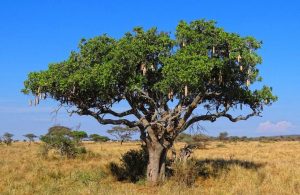It is found in nature, is native to Africa, and is a real cure-all for the skin and more, especially in summer when sunburn and rashes are always a danger: we are talking about the aloe, a truly miraculous vegetable.
The aloe is a perennial succulent plant or shrub that can reach a height of up to one meter. The leaves appear spotted in the growth phase and then take on a uniform green colour in the adult state and are covered with a protective film that allows the plant to filter the air and water. In the ‘true’ variety, the leaves are arranged in a tuft, 40-60 cm long, lanceolate, with an acute apex. They have thorns only along the sides. The flowers are yellow to red in colour. The fruits consist of a loculicidal capsule.
It is inside the plant, however, that all its healing powers are preserved: under the first membrane there is in fact a first cellulosic layer that encloses the Aloin. Finally, in this triple plant protection, the aquifer parenchyma is enclosed: a colourless tissue made up of the plant’s gel.
What are the powers of the aloe? The aloe soothes. It offers immediate relief from mosquito and other insect bites. It is also ideal in case of burns (both those in the kitchen and those due to too much sun): just squeeze a little gel onto the affected area and the relief will be immediate and definitive.
It is used in skincare. Aloe has a dermo-protective, moisturizing and emollient action. For this reason, this plant is abundantly used by the beauty industry in soaps, creams and bubble baths.
It is a coagulant. Aloe is able to quickly repair tissues and membranes, so it is used not only on burns but also on wounds, eczema and blisters, to accelerate healing.
It purifies. Aloe can detoxify the body. Furthermore, its saccharides adhere to the walls of the intestine, forming a protective barrier that prevents the absorption of harmful substances.
It is a laxative. Aloe is an ally of the digestive system: it stimulates the bacterial flora and the elimination of waste while improving the absorption of nutrients (but not harmful elements).
It stimulates the immune system. Aloe contains acemannan, a sugar with antiviral, anti-inflammatory and anti-tumour properties: in fact, it stimulates the production of macrophages, white blood cells that destroy cancer cells.
It is used in hair care. Aloe is an exceptional conditioner as it makes the hair shiny and protects the scalp.
The aloe is native to the north-eastern coast of Africa and the Mediterranean basin, from which it probably spread to India and America, from Texas to Mexico to Venezuela, and even Oceania. The plant prefers hot and dry climates and grows spontaneously on dry and calcareous soils, but it can also be cultivated, both by seeds and by cuttings.
(Photo: CC BY-SA 4.0/PilotChicago)






